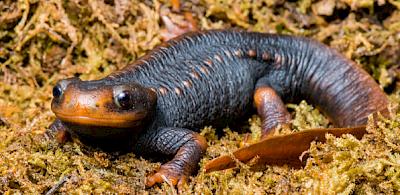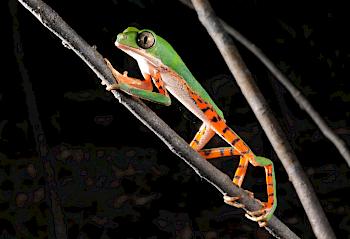TRAFFIC Amphibian Analysis: Trade needs to be regulated to prevent overexploitation and the spread of deadly diseases - Wildlife Trade Report from TRAFFIC - TRAFFIC - Wildlife Trade News
It is clear from this study that a large volume of non-CITES-listed amphibian species is traded across the globe, which could, in turn, have major ramifications for the survival of the species. CITES Parties should work together ahead of CoP19 to ensure amphibian species impacted by international trade are given essential protections through CITES regulation."
Tomomi Kitade, TRAFFIC's Director of Japan

To focus efforts, TRAFFIC proposes a list of high conservation priority amphibians, which would benefit from having trade regulated and carefully monitored to prevent further biodiversity loss. For species that meet the relevant criteria, TRAFFIC suggests that CITES Parties consider proposing these species for CITES listings at the next meeting of the Conference of the Parties to CITES (CoP19), planned for November 2022.
The 2021 report Analysing Amphibians: A rapid assessment reveals that the international commercial trade of at least 267 amphibian species is not regulated by CITES even though some of these species are considered threatened by the International Union for Conservation of Nature (ICUN) Red List of Threatened Species.
"This lack of regulation is deeply concerning given the number of amphibian species threatened by direct impacts of trade such as the unsustainable wild collection," said Dr Eleanor Drinkwater, Research and Analysis Support Officer.
Our study found almost a third of live non-CITES listed amphibians recorded in US 2008-2018 import data were reported to have been collected directly from the wild. According to the data, the remaining individuals were from captive sources. However, the actual proportion of wild may be higher as laundering wild-caught individuals have previously been reported in amphibians."
Dr Eleanor Drinkwater, Research and Analysis Support OfficerThe rapid assessment highlighted species that are likely at high risk from international trade, based on observations in three major destination countries, the USA, Japan, and Germany, analysed jointly with and the conservation risk of the species assessed by the IUCN Red List.
The study reviewed the import of amphibians into the USA, and Japan found:
- The United States of America was reported to import 27 million live, non-CITES-listed individuals between 2008 and 2018.
- Japan was reported to import the highest number of amphibians from the USA: 27,000 individuals from a total of 130,000 amphibians between 2005 and 2020.

Indirect effects of the trade can also have dire consequences by stimulating the spread of disease. Often transported in confined spaces, infection can easily be transmitted between individuals. The trade of diseased individuals could infect wild individuals, either directly, through accidental or intentional release, or incidentally through improper disposal of contaminated bedding or water. In 2019, an outbreak of the Chytrid Fungus Batrachochytrium dendrobatidis drove an estimated 90 species of amphibians to extinction2.
TRAFFIC calls for the inclusion of the high conservation priority species into CITES appendices to prevent amphibian species decline or the potential spread of deadly diseases spurred on by international trade. TRAFFIC encourages CITES to consult expert groups like the IUCN specialist group. Furthermore, TRAFFIC stands ready to work with governments on how amphibians are represented in national customs trade data and how this can be improved.



Comments
Post a Comment